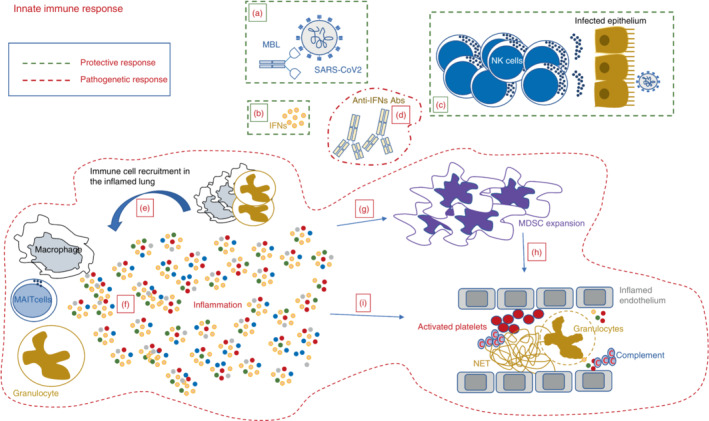FIGURE 1.

Protective and pathogenic pathways of the innate immune response during SARS‐CoV‐2 infection. Protective innate response: surrounded by a green hatched line, includes both soluble (a and b) and cellular components (d). (a) Mannose‐binding lectin (MBL) binds to trimeric Spike, thus inhibiting viral infection; (b) Early activation of type‐I IFN response exerts antiviral effect and prevents severe clinical manifestations; (d) Early expansion of cytotoxic NK cells contributes to viral clearance and associates with mild clinical presentation. Pathogenic innate response: surrounded by a red hatched line, includes both soluble (c, e and f) and cellular components (g–i). (c) Antibody anti‐type‐I IFN block the IFN antiviral activity and associates with a severe clinical outcome; (e) Lung resident myeloid and MAIT cells produce huge amounts of inflammatory cytokines and chemokines that, in turn, massively recruit macrophages and neutrophils from the peripheral blood, thus exacerbating the cytokine storm; (f) The huge amount of inflammatory mediators reaches the bloodstream, inducing a cascade of events contributing to the host injury; (g) The inflammatory storm induces a massive expansion of myeloid derived suppressor cells (MDSC) that can reduce the inflammation but strongly impair the antigen‐specific T‐cell response; (h) Expanded MDSC participate to platelet activation by reducing the plasmatic arginine. (i) The inflammatory storm triggers several detrimental pathways as complement activation, hypercoagulation, endothelial damage, arterial and venous embolism with NET formation
